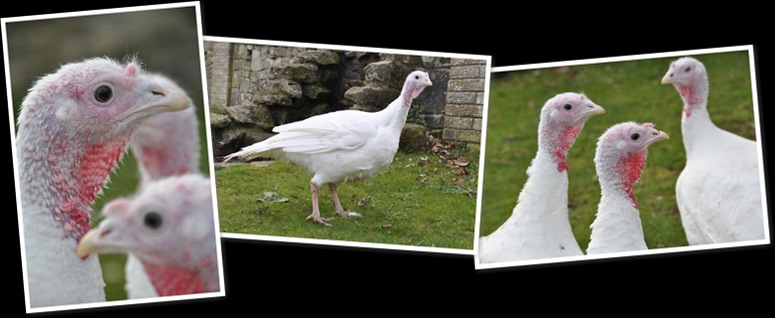This is a short story of three Isle of Wight Turkeys destined for the dinner table …
We recently heard about three white Turkeys left over after the Christmas season … apparently still destined to land up in someone’s freezer or to be sold by the farmer to a local market. Of course, once we’d heard about them, and knowing what beguiling creatures they are, we couldn’t just leave them to their tragic fate …. so our livestock family expanded ever so slightly when we offered the three gobblers a new home yesterday!
Having never worked with Turkeys before the first thing that struck me was their large, sturdy size – compared with our other species of poultry. The other notable characteristic is their slow, placid, docile nature! They seemed quite unperturbed by their re-location and were quite calm when touched.
Despite the name, Turkeys apparently have no direct connection with the country of Turkey – they’re native to North America – although have been bred in many countries around the world for centuries. Unfortunately for Turkeys, industrialized farming methods have made it very cheap to raise these birds – each one producing a large amount of meat. The female domesticated Turkey is known as a Hen, the chick as a Poult and the male as a Stag (in the UK and Europe) or as a Tom (in the United States).
Our newcomers are only a few months old and haven’t yet grown their fleshy protuberances! The one at the top of the beak is called the ‘snood’ and the one attached to the underside of the beak is the ‘wattle’. We don’t yet know the sex of our gentle birds but would be more than happy if they were to surprise us by hatching out some Poults in due course! Apparently the average lifespan of a domesticated turkey is around ten years – so all being well they’ll be with us for some time to come. All being well they’ll be here waiting for our spring Park visitors to arrive!







No comments:
Post a Comment